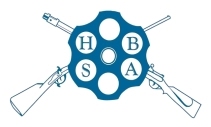Enfield P1914 magazine bolt-action rifle .303
posted 09 November 2021, 1:44 am
| 01. Original name | Rifle, Magazine, .303in, Pattern 1914 Mk. I | |
| 02. Other official names | Rifle No. 3 Mk. I | |
| 03. Popular names | Pattern 1914 Enfield, P14 | |
| 04. Chamberings | .303 | |
| 05. Designed by | RSAF Enfield | |
| 06. Design date | 1910-1914 | |
| 07. In service date(s) | 1916 onwards | |
| 08. Adopted by | UK and Commonwealth | |
| 09. Production quantities | 1,246,415 | |
| 10. Mechanism | Bolt Action | |
| 11. Weight | 3.94kg (8.69lbs) | |
| 12. Mountings | Bayonet (Pattern 1913) | |
| 13. Practicality in action | Medium | |
| 14. Comments / Other information | During the Boer War, the 7mm Mauser cartridge (fired by the Mauser Model 1895 rifle used by the Boers) had outperformed the British .303 cartridge due to its better ballistics, including a higher velocity and flatter trajectory. In addition, the quality of .303 ammunition was variable, as was the marksmanship training in the British Army. Calls for a replacement to the Lee Enfield only intensified after the SMLE Mk. III came into service and so the War Office started to develop a new rifle based on the Mauser action and chambered for a 7mm cartridge. By 1912, development had reached the point where 1,000 ‘Rifle, Magazine, .276in Pattern 1913’ were ordered for troop trials. The results indicated there was still some way to go, as there was excessive flash and blast, excessive wear to the barrel, irregular chamber pressures and barrel overheating (which also caused premature ignition). The outbreak of WW1 caused the project to be shelved, but the rapid expansion of the British Army meant an acute shortage of Lee Enfields (which now had the Mk. VII .303 cartridge) and so the design was modified to accept the .303 cartridge. Contracts were placed with Winchester, Remington and Eddystone (a wholly-owned subsidiary of Remington) to produce the ‘Rifle, Magazine, .303in, Pattern 1914 Mark 1W / 1R / 1E’ (the letter indication the manufacturer). In February 1917, the Mark 1W* / 1R* / 1E* variant was introduced, with a thicker fore end and minor manufacturing changes. These rifles received a second lease of life in WW2 when they were issued to the Home Guard, second-line troops and Royal Navy personnel. |
